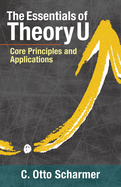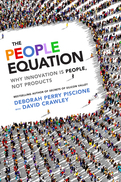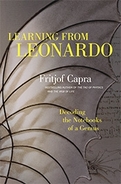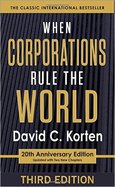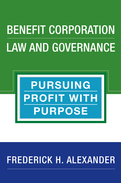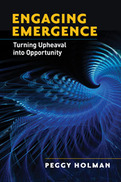This book offers a concise, accessible guide to the key concepts and applications in Otto Scharmer's classic Theory U. Scharmer argues that our capacity to pay attention coshapes the world. What prevents us from attending to situations more effectively is that we aren't fully aware of that interior condition from which our attention and actions originate. Scharmer calls this lack of awareness our blind spot. He illuminates the blind spot in leadership today and offers hands-on methods to help change makers overcome it through the process, principles, and practices of Theory U. And he outlines a framework for updating the “operating systems” of our educational institutions, our economies, and our democracies. This book enables leaders and organizations in all industries and sectors to shift awareness, connect with the highest future possibilities, and strengthen the capacity to co-shape the future.
2017
Every business leader knows that the key to growth is innovation—if you do what you've always done, you'll get what you've always got. Deborah Perry Piscione and David Crawley argue that ultimately the key to innovation is people. After all, creativity is a uniquely human function, something that can't be automated. So how do you design an organization so that it provides the elements that will bear new thinking and bring forth bold ideas? Through The People Equation.
Based on examples from their consulting work and research into successful business practices, Perry Piscione and Crawley's The People Equation enables leaders to create a culture where psychological safety is a given, risk taking is embraced, and collaboration between highly competent people is nurtured. When experiments and new initiatives look promising, Perry Piscione and Crawley's Improvisational Innovation process provides a road map to quickly develop ideas and bring them to market. All this requires upending the usual organizational pyramid and instilling a completely new mindset throughout the organization.
Perry Piscione and Crawley show that in our rapidly changing world, the top is not where the really disruptive ideas are going to come from. And if people are afraid to take chances, even fail, you're never going to get those ideas—playing it safe means you'll be out of the game. The People Equation provides you with a formula for exponentially increasing out-of-the-box thinking in your organization and multiplying your chances for greater growth and success.
Obviously, we can't all be geniuses on the scale of Leonardo da Vinci. But by exploring the mind of the preeminent Renaissance genius, we can gain profound insights into how best to address the challenges of the 21st century.
- By the bestselling author of The Tao of Physics and The Web of Life
- Reveals Leonardo da Vinci's surprisingly modern approach to scientific inquiry and the amazing discoveries that resulted
- Identifies seven characteristics of Leonardo's genius that we can all learn from
Leonardo da Vinci was a brilliant artist, scientist, engineer, mathematician, architect, inventor, writer, and even musician-the archetypal Renaissance man. But he was also, Fritjof Capra argues, a profoundly modern man.
Not only did Leonardo invent the empirical scientific method over a century before Galileo and Francis Bacon, but Capra's decade-long study of Leonardo's fabled notebooks reveal him as a systems thinker centuries before the term was coined. He believed the key to truly understanding the world was in perceiving the connections between phenomena and the larger patterns formed by those relationships. This is precisely the kind of holistic approach the complex problems we face today demand.
Capra describes seven defining characteristics of Leonardo da Vinci's genius and includes a list of over forty discoveries Leonardo made that weren't rediscovered until centuries later. Leonardo pioneered entire fields-fluid dynamics, theoretical botany, aerodynamics, embryology. Capra's overview of Leonardo's thought follows the organizational scheme Leonardo himself intended to use if he ever published his notebooks. So in a sense, this is Leonardo's science as he himself would have presented it.
Leonardo da Vinci saw the world as a dynamic, integrated whole, so he always applied concepts from one area to illuminate problems in another. For example, his studies of the movement of water informed his ideas about how landscapes are shaped, how sap rises in plants, how air moves over a bird's wing, and how blood flows in the human body. His observations of nature enhanced his art, his drawings were integral to his scientific studies, and he brought art and science together in his extraordinarily beautiful and elegant mechanical and architectural designs.
Obviously, we can't all be geniuses on the scale of Leonardo da Vinci. But by exploring the mind of the preeminent Renaissance genius, we can gain profound insights into how best to address the challenges of the 21st century.
A handful of corporations and financial institutions command an ever-greater concentration of economic and political power in an assault against markets, democracy, and life. It's a “suicide economy,” says David Korten, that destroys the very foundations of its own existence.
The bestselling 1995 edition of When Corporations Rule the World helped launch a global resistance against corporate domination. In this twentieth-anniversary edition, Korten shares insights from his personal experience as a participant in the growing movement for a New Economy. A new introduction documents the further concentration of wealth and corporate power since 1995 and explores why our institutions resolutely resist even modest reform. A new conclusion chapter outlines high-leverage opportunities for breakthrough change.
Corporations today are embedded in a system of shareholder primacy. Nonfinancial concerns—like worker well-being, environmental impact, and community health—are secondary to the imperative to maximize share price. Benefit corporation governance reorients corporations so that they work for the interests of all stakeholders, not just shareholders.
This is the first authoritative guide to this new form of governance. It is an invaluable guide for legal and financial professionals, as well as interested entrepreneurs and investors who want to understand how purposeful corporate governance can be put into practice.
2010
In this profound book, Peggy Holman offers principles, practices, and real-world stories to help you work with compassion, creativity, and wisdom through the entire arc of change—from disruption to coherence. You'll learn what to notice, what to explore, what to try, and what mindset opens new possibilities.
This work can be challenging but also tremendously rewarding. It enables new and unlikely partnerships and develops breakthrough projects. You become part of a process that transforms the culture itself.
-
Shows how to spot the emergence of a new level of order from the seemingly chaotic change that characterizes modern times
-
Offers practices and principles that will help you align yourself and your organization with the new order
-
Features real-world examples of individuals and organizations that have successfully navigated disruptive change
- 2011 Nautilus Gold Medal in the category of Conscious Business/Leadership
Change is everywhere these days, so much so that it can seem like barely-controlled chaos. As a result, increasing numbers of leaders, managers, workers and change agents feel overwhelmed. Some see too many choices, while others see no choices at all. But sometimes within this seeming chaos are the seeds of a higher order. Science calls the process of a new system arising from the ashes of the old emergence. Understanding the phenomenon of emergence can help leaders to gracefully and successfully cope with change and emerge stronger and more purposeful.
In this profound and insightful book, Peggy Holman offers new ways to think about the potential upheaval contains as a source of emergent change and shows how to engage it productively. This is is an art more than a science, so Holman offers practices that tell you not precisely what to do but rather how to approach disruptive situationswhat to notice, what to explore, what to try, what mindset will leave you most open to identifying the new paradigm as it emerges. She grounds these practices in five overarching principles that apply the scientific understanding of emergence in the natural world to social and organizational change processes. Real-world stories of collapse and renewal serve to illustrate these principles and practices in action. And Holman outlines three questions to help you work compassionately, creatively and wisely with the entire arc of the change process, from coherence to disruption to renewal.
This work can be difficultthe end is rarely in sight and the outcome is often uncertain. But it can also be tremendously exciting. Our survival in an increasingly unpredictable world is at stake, and working consciously with emergence is a promising pathway to doing something about it.


